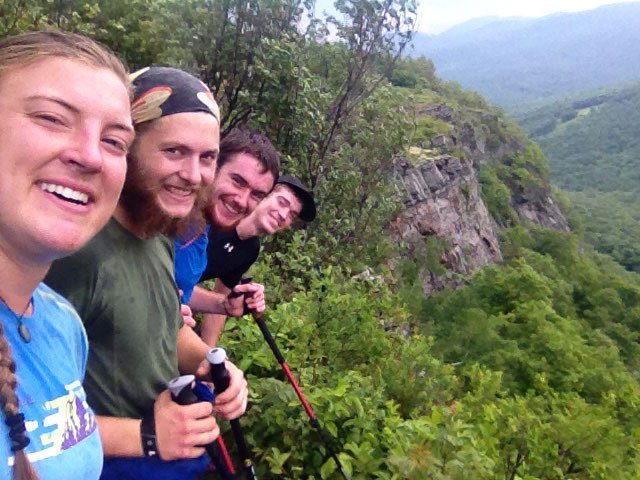Ask islander Lizzy Corliss about her adventures hiking the Appalachian Trail solo this year or the Pacific Crest Trail with her brother Josh last year, and her stories are peppered with names like Neon, Goosebumps, Magic Stick, Pan, Tooneboost and her own — Laugh Track. There’s a unique culture born from hours on the trail — including lingo and nicknames. Corliss will share her first-hand knowledge about trail culture, her experiences while hiking the Appalachian Trail (AT) and show slides at 7 p.m. Friday at the Land Trust building.
Corliss, 23, left Vashon in early March for the 2,190 mile route that traverses 14 states, from the trailhead at Springer Mountain in Georgia to the end point on top of Mount Katahdin in Maine.
Arriving at the Amicalola Falls State Park on March 8 for the annual AT kickoff event, Corliss found inspiration in the second person to have completed the trail from start to finish, otherwise known as a “through-hiker.”
“He’s about 80 now,” Corliss said, “but he talked about the AT when it was just a rabbit trail. His equipment was a cotton Boy Scout tent and a carbide miner’s lamp. The lamp blew all our minds.”
Like her experience on the Pacific Crest Trail (PCT), Corliss met others bitten by the long-distance hiking bug — both those doing the trek, and those supporting it, dubbed the trail angels. “Freshgrounds” was one such character. He likes the culture of the through-hikers and randomly shows up along the trail to cook meals for the ravenous walkers.
Though Corliss spent close to the same amount of time on the two hikes — about four and a half months — her experiences differed more than remained the same. Whereas elevation gain on the PCT ranges from sea level to over 13,000 feet, the highest point on the AT is the 7,200 foot Clingmans Dome in the Smokey Mountains.
Most of the time, Corliss said the trails were under 1,000 feet, and many crossed through farm pastures. Unlike the 15 mile vistas along the PCT, the AT is likened to a green tunnel, and the verdant landscape helped shape the experience.
“There are a lot of deciduous trees and rhododendrons, so you are in a 5- to 10-foot tunnel,” Corliss said. “That led to more groups walking side by side. We entertained each other instead of looking at the vast scenery.”
To her surprise, Corliss found the AT to be more physically demanding than the PCT. There are no switchbacks to ease the upward hikes; the trails go straight up and down. The little annoyances added up, she said, like mosquitos and the ticks in the grass; the uneven, rocky trails and being chaffed because of the humidity. The PCT demanded a greater mental stability, she said, as it is real wilderness, and one can’t just pop into town for supplies.
As for the hikers, most on the AT were from the East Coast, with some hailing from Germany, Israel and Canada. She said the culture was less loose, but added that people were doing the AT for reasons that seemed more meaningful.
“The AT is not so much a journey about oneself as it is an outlet of action for others, like the guy who hiked in memory of two army colleagues. He took two stones with their names carved in them and left them at the top of Mount Katahdin,” she said.
With the PCT and AT under the belt of her backpack, Corliss is looking ahead to next year, when she plans to tackle the Continental Divide Trail (CDT) with her brother, garnering the coveted Triple Crown of Hiking, awarded for completing all three trails.
“It’s like a school system,” she said. “The AT is kindergarten, the PCT is middle school, and the CDT is college. They are the Triple Crown of Hiking.”
For now, Corliss has been invited back to her alma mater, the University of Montana, by her former professors in the Parks, Tourism and Recreational Management department to talk about her trips.
“I’ve seen a lot of the places we would use as case examples,” she said, adding that she always thought travel was important but never expected her travels to revolve around hiking.
“The experiences on the trail have helped me to gain a certain compassion for all people,” Corliss said. “You see a varied makeup of people, even in the U.S., that is intriguing. It’s part of being a through-hiker.”


